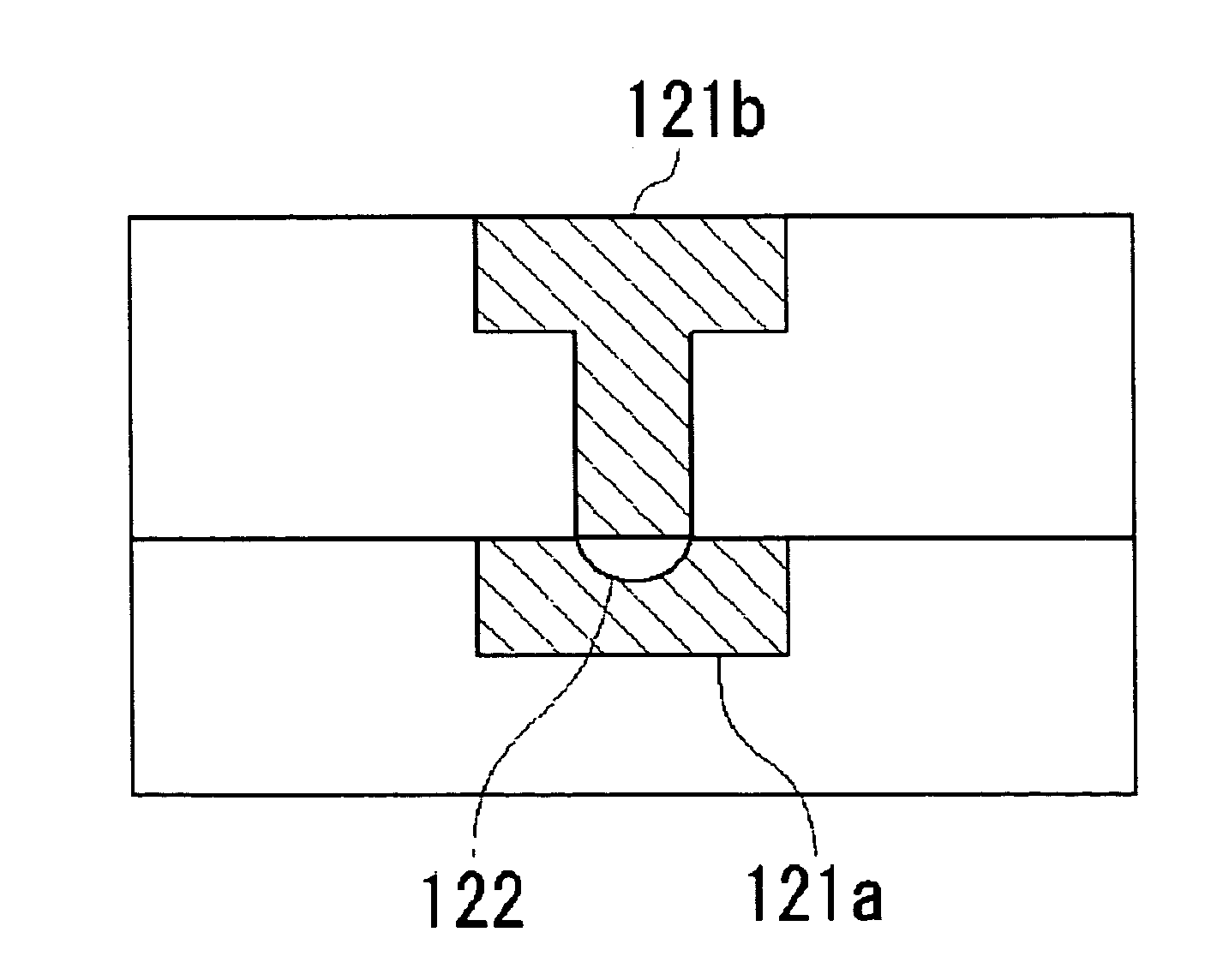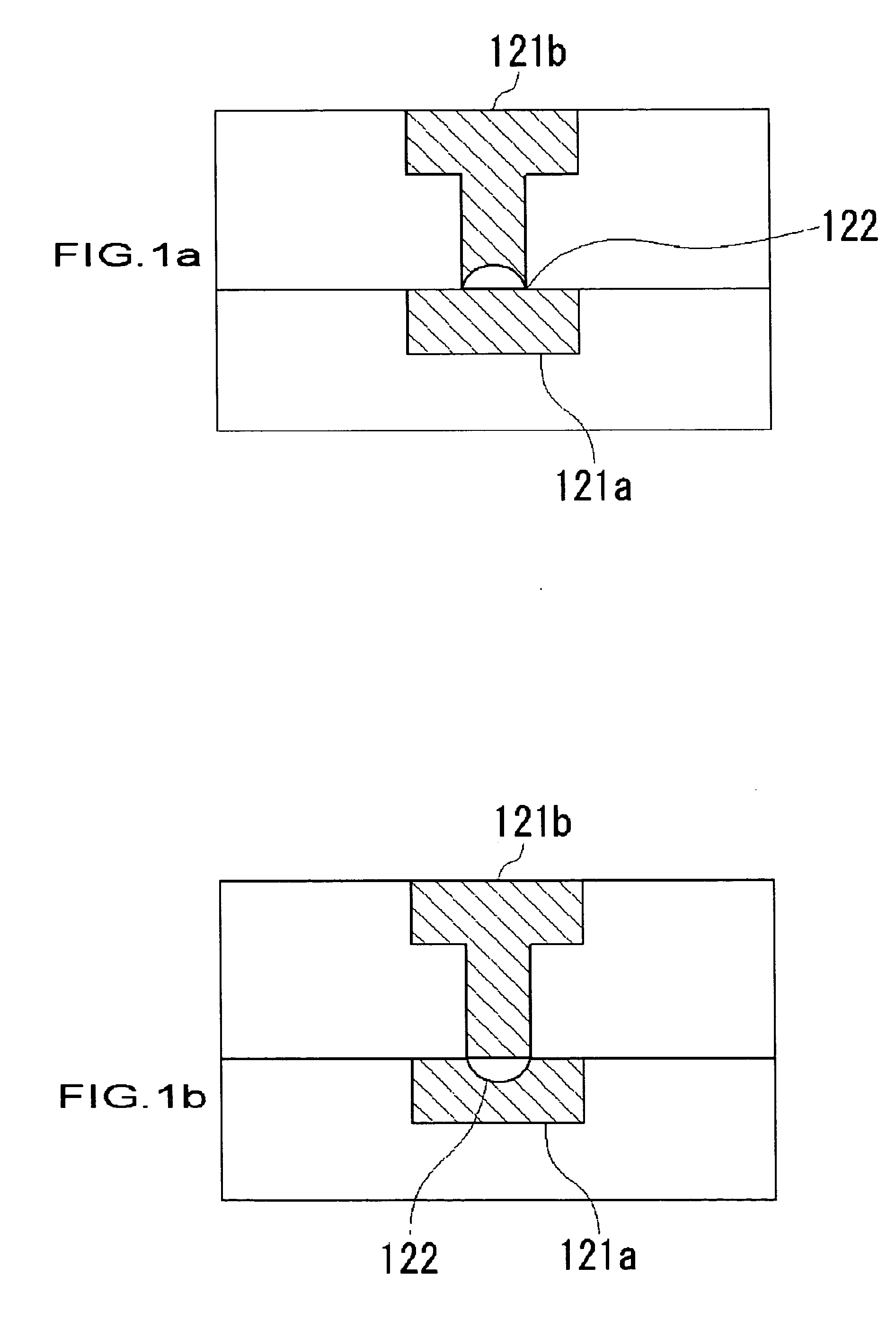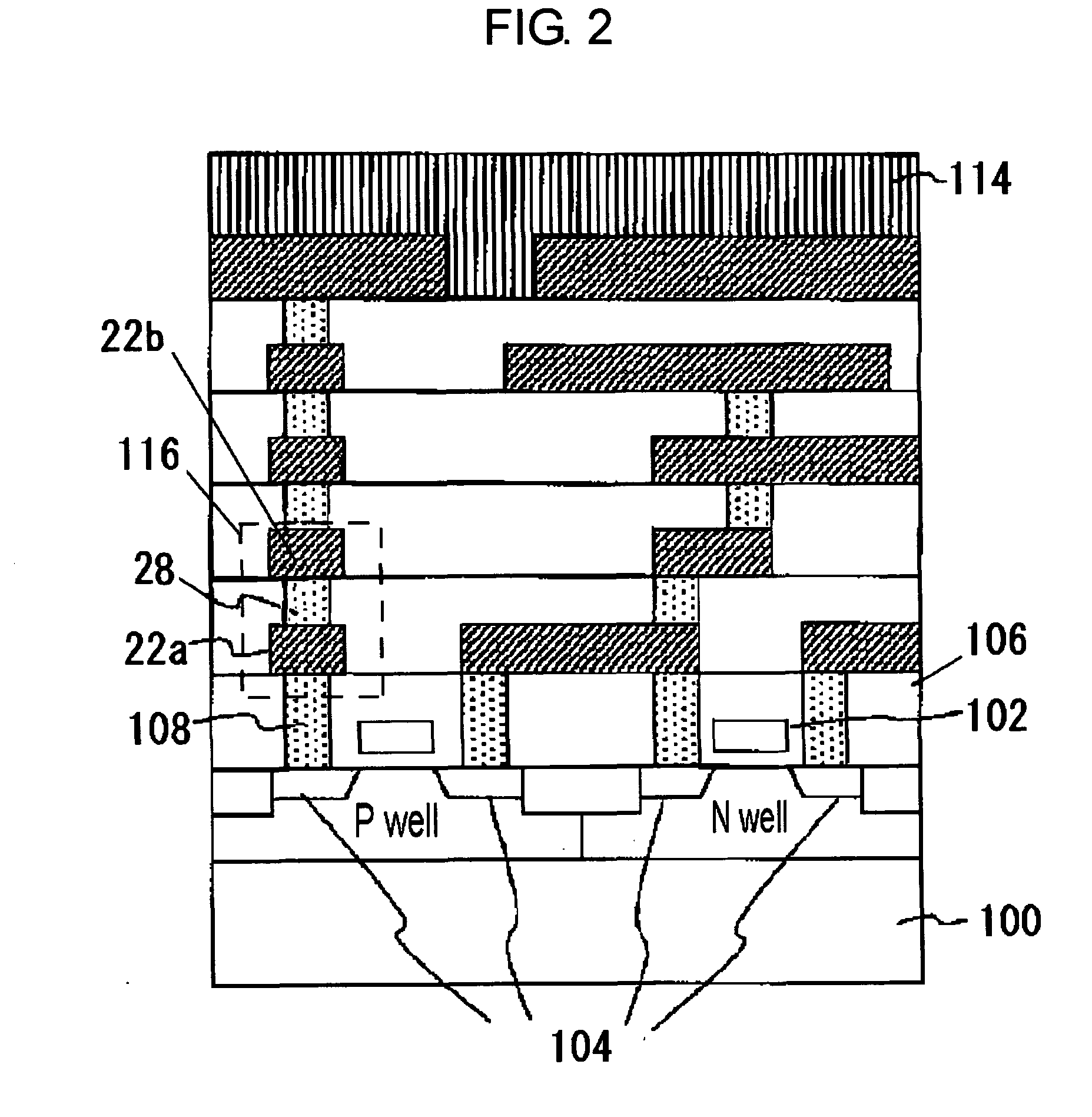Semiconductor device and manufacturing method thereof
a semiconductor and semiconductor technology, applied in the field of semiconductor devices, can solve the problems of em due to the mass transfer through the grain boundary, the semiconductor device is prone to damage, and the conventional method is difficult to diffuse a dissimilar metal,
- Summary
- Abstract
- Description
- Claims
- Application Information
AI Technical Summary
Benefits of technology
Problems solved by technology
Method used
Image
Examples
first embodiment
[0116] First Embodiment
[0117] The first embodiment shall be described referring to FIGS. 3a to 5, with respect to an interconnect formed by single Damascene method, in which the present invention is incorporated.
[0118] To start with, on the dielectric layer 106 formed on a silicon substrate (not shown), a first SiCN layer 12 (thickness approx. 70 nm) and a first HSQ layer 14a (thickness approx. 700 nm) are formed, on which a resist layer (not shown) patterned in a prescribed design is then provided, and progressive etching is performed on the first SiCN layer 12 and the first HSQ layer 14a to form an interconnect trench (FIG. 3a).
[0119] Then Ta and TaN are layered by sputtering and reactive sputtering to form a tantalum family barrier metal layer 24a (thickness of Ta approx. 20 nm, that of TaN approx. 10 nm) all over the substrate (FIG. 3b).
[0120] Following the above a seed copper-containing metal layer 60 (approx. 100 nm thick) is formed by sputtering over the tantalum family barri...
second embodiment
[0136] Second Embodiment
[0137] The second embodiment is different from the first embodiment in that a CVD copper layer 68 is formed by plasma CVD method instead of forming the seed copper-containing metal layer 60 and the plated copper layer 62, when forming the first copper-containing metal interconnect 22a, the connecting plug 28 and the second copper-containing metal interconnect 22b.
[0138] This embodiment shall be described referring to FIGS. 6 and 7. After forming the tantalum barrier metal layer 24a, the CVD copper layer 68 (thickness approx. 200 nm at a plain portion) is formed by plasma CVD method (FIG. 6a). At this stage, crystal orientation of the CVD copper layer 68 is (111). It is preferable to form the CVD copper layer 68 in such a thickness that does not completely fill the interconnect trench.
[0139] Then, copper oxide on a surface of the CVD copper layer 68 is sputtered and reduced by Ar / H.sub.2 plasma of a room temperature in a cleaning chamber. And then the substrat...
third embodiment
[0148] Third Embodiment
[0149] The third embodiment is different from the first embodiment in that the connecting plug 28 and the second copper-containing metal interconnect 22b by dual Damascene method. Referring to FIGS. 8 and 9, similar components to those in FIGS. 3 to 5 referred to in the first embodiment are given the identical numerals, and description thereof shall be omitted as the case may be.
[0150] The first copper-containing metal interconnect 22a can be formed in a similar manner to the preceding description of the first embodiment referring to FIG. 3, or to the following description on the second copper-containing metal interconnect 22b.
[0151] After forming the first copper-containing metal interconnect 22a (FIG. 8a), the second SiCN layer 16 and a silicon oxide layer 50 are deposited (FIG. 8b). Then progressive etching is performed on the silicon oxide layer 50 utilizing lithography method, to form a connecting hole 52 and an interconnect trench 52 for the connecting p...
PUM
| Property | Measurement | Unit |
|---|---|---|
| grain size | aaaaa | aaaaa |
| size | aaaaa | aaaaa |
| width | aaaaa | aaaaa |
Abstract
Description
Claims
Application Information
 Login to View More
Login to View More - R&D
- Intellectual Property
- Life Sciences
- Materials
- Tech Scout
- Unparalleled Data Quality
- Higher Quality Content
- 60% Fewer Hallucinations
Browse by: Latest US Patents, China's latest patents, Technical Efficacy Thesaurus, Application Domain, Technology Topic, Popular Technical Reports.
© 2025 PatSnap. All rights reserved.Legal|Privacy policy|Modern Slavery Act Transparency Statement|Sitemap|About US| Contact US: help@patsnap.com



